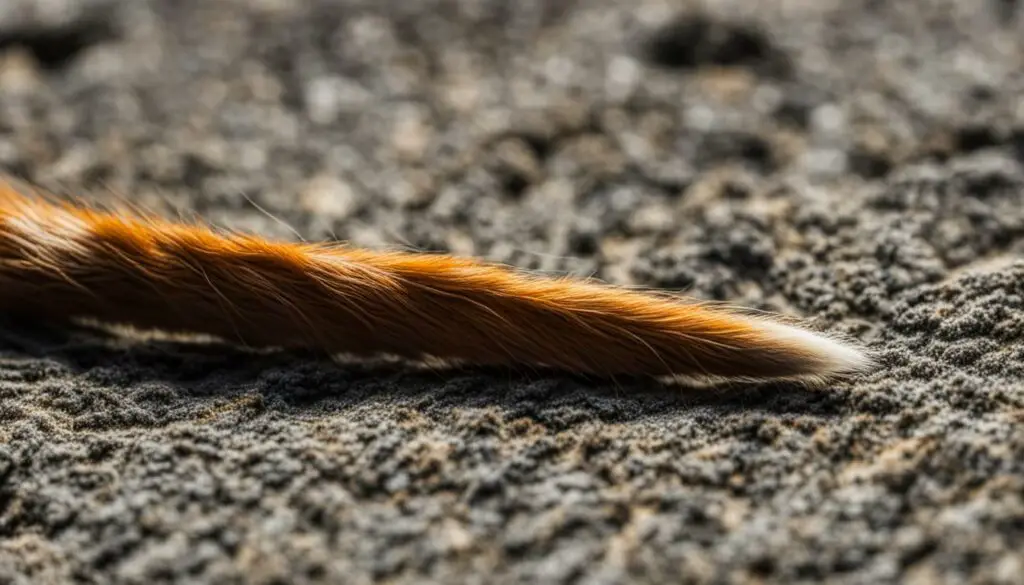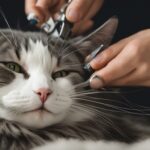Clipping cats’ claws is a common practice among cat owners, but there is a debate about whether it is cruel or not. Understanding the basics of claw clipping can help make an informed decision about this procedure.
Key Takeaways:
- Clipping cats’ claws is a debated topic among cat owners.
- Understanding the reasons behind claw clipping is important for responsible pet ownership.
- Proper techniques and care can ensure the cat’s welfare.
- The decision to clip a cat’s claws should be based on their individual needs and the owner’s ability to provide proper care.
- Claw clipping can help prevent damage to furniture and potential injuries to humans or other animals.
Why Cats Need Their Claws Clipped
Cats rely on their claws for various reasons, making regular claw clipping an important aspect of their overall well-being. Understanding why cats need their claws clipped can help cat owners make informed decisions about their pet’s care. Here are the main reasons why cats need their claws clipped:
- Stretching: Cats use scratching as a way to stretch their bodies and maintain flexibility. By scratching on different surfaces, they are able to work their muscles and tendons, promoting good overall health.
- Marking territory: Scratching is also a form of communication for cats. When they scratch, they leave visual and scent marks, indicating their presence and territory. This behavior helps them establish a sense of security and ownership over their environment.
- Removing dead layers: Cats’ nails have an outer sheath that continuously grows. By scratching, they remove the dead layers, making their claws thinner and sharper. Regular claw clipping helps maintain the health and sharpness of their nails.
- Relieving anxiety: Scratching also serves as a stress-reliever for cats. It helps them release tension and anxiety, promoting a sense of relaxation and well-being.
Neglected nails can lead to discomfort and potential injuries for cats. If left unclipped, nails can grow in a circular shape, making it difficult and painful for cats to retract and extend their claws properly. Clipping their claws on a regular basis helps prevent these issues and ensures that cats can engage in their natural scratching behavior without any hindrance.
Overall, regular claw clipping is essential for cats’ physical and emotional well-being. It is an important responsibility for cat owners to provide the necessary care and maintenance for their pets’ claws, ensuring they lead happy and healthy lives.
| Benefits of Clipping Cats’ Claws | Benefits of Not Clipping Cats’ Claws |
|---|---|
| Prevents damage to furniture and other surfaces | Risk of furniture and surface damage |
| Reduces the likelihood of injuries to humans or other animals | Potential injuries to humans or other animals |
| Helps maintain the health and sharpness of cats’ nails | Potential discomfort and injuries due to overgrown nails |
| Allows cats to engage in their natural scratching behavior | Hindrance to cats’ natural scratching behavior |
The Benefits of Clipping Cats’ Claws
Clipping a cat’s claws offers several benefits for both the cat and their owner. By regularly trimming their claws, you can help prevent damage to furniture and other surfaces in your home. Claws that are left unclipped can cause scratches and unsightly marks on your belongings, which can be costly to repair or replace. By keeping your cat’s claws trimmed, you can easily mitigate this potential damage and maintain a well-kept living space.
Additionally, clipping your cat’s claws can help manage their scratching behavior. Cats naturally scratch to stretch their muscles, mark their territory, and remove the dead outer layers of their claws. However, when their claws are too sharp or untrimmed, they may unintentionally cause harm to themselves, other pets, or even humans. Trimming their claws can reduce the likelihood of accidental scratches or injuries, ensuring the safety and well-being of everyone in your household.
Furthermore, regular claw clipping can help keep your cat’s nails in a healthier condition. Overgrown nails can curl and grow inwards, causing discomfort and potential pain for your feline companion. Clipping their claws ensures that they remain a manageable length, minimizing the risk of ingrown nails and associated health issues. It is important to note that if you are unsure about how to properly clip your cat’s claws, you should consult with a veterinarian or a professional groomer for guidance and assistance.
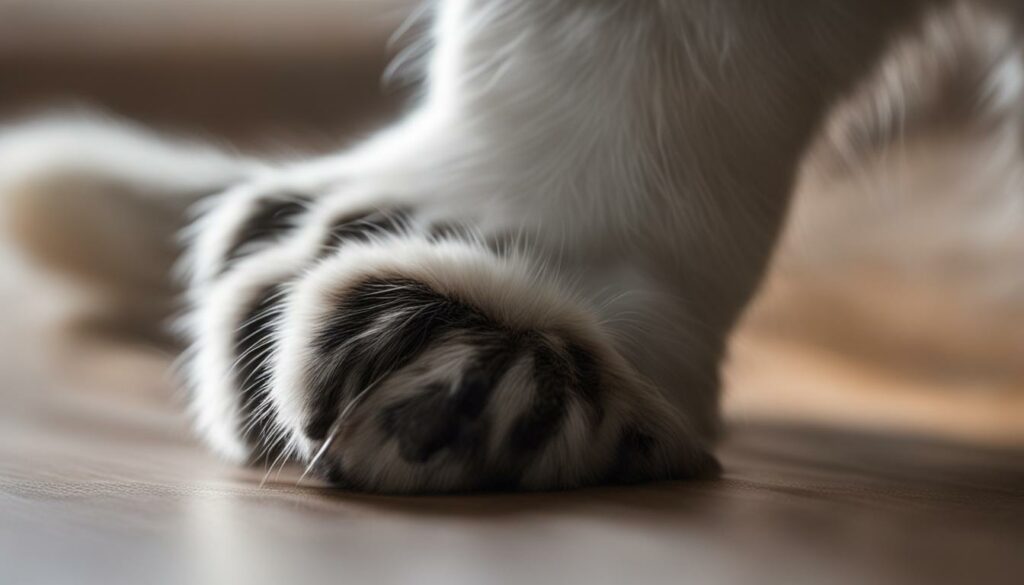
Overall, the benefits of clipping cats’ claws extend beyond simply maintaining a well-groomed appearance. By regularly trimming their claws, you can protect your furniture, prevent injuries, and promote the overall health and well-being of your feline friend. It is important to approach claw clipping with care and caution, using the proper techniques and tools to ensure a safe and comfortable experience for both you and your cat.
How to Clip Cats Claws Safely
If you decide to clip your cat’s claws at home, it’s important to do it safely and without causing any discomfort to your furry friend. Follow these steps to ensure a successful and stress-free claw clipping session:
- Prepare the environment: Find a quiet and well-lit area where you can comfortably work with your cat. Make sure you have all the necessary supplies within reach, including a pair of cat nail clippers and a styptic pencil in case of accidental bleeding.
- Hold the paw gently: Approach your cat with a calm and reassuring demeanor. Take one of their paws and gently hold it, making sure not to apply too much pressure. This will allow you to have better control when clipping their nails.
- Trim the nails carefully: Position the clippers perpendicular to the nail, and cut about 1/8 inch before the quick, which is the vein inside the nail. Be cautious not to cut too close to the quick, as it can cause discomfort and bleeding. If your cat has dark-colored nails where the quick is not easily visible, it’s safer to trim smaller amounts at a time.
- Take breaks if needed: If your cat becomes anxious or agitated during the process, it’s important to take breaks and provide reassurance. Remember, it’s better to complete the nail trimming in multiple sessions than to force your cat through a stressful experience.
By following these steps, you can confidently and safely clip your cat’s claws, ensuring their well-being and maintaining a positive bond between you and your feline companion.
Table: Cat Claw Clipping Supplies
| Supplies | Description |
|---|---|
| Cat nail clippers | A specialized tool designed for safely trimming cat’s nails. Choose either scissor clippers or guillotine clippers based on your preference. |
| Styptic pencil | A pencil-shaped product that contains antihemorrhagic agents, which can stop bleeding in case you accidentally cut the quick. |
Remember to approach the claw clipping process with patience and gentleness. It may take some time for your cat to become comfortable with the procedure, but with practice and positive reinforcement, it can become a routine part of your cat’s grooming regimen.
Tips for Successful Claw Clipping
When it comes to clipping a cat’s claws, proper handling and a relaxed environment can make all the difference. Here are some tips to help make the process smoother and stress-free:
- Handle the paws regularly: Gently touch and massage your cat’s paws when they are relaxed to get them accustomed to the sensation. This will help them feel more comfortable during claw clipping sessions.
- Ask for assistance: If your cat is particularly difficult to handle, having someone else hold them while you clip their claws can make the process easier and safer for everyone involved.
- Choose a calm time: Try to clip your cat’s claws during a time when they are naturally more relaxed, like nap time. This can help reduce their anxiety and make the experience less stressful for both of you.
Remember, patience is key when it comes to claw clipping. Take your time, be gentle, and provide plenty of positive reinforcement throughout the process. Your cat’s comfort and well-being should always be the top priority.
“Proper handling and a relaxed environment can make all the difference when clipping a cat’s claws.”
By following these tips, you can help ensure a successful claw clipping session and maintain the health and happiness of your feline friend.
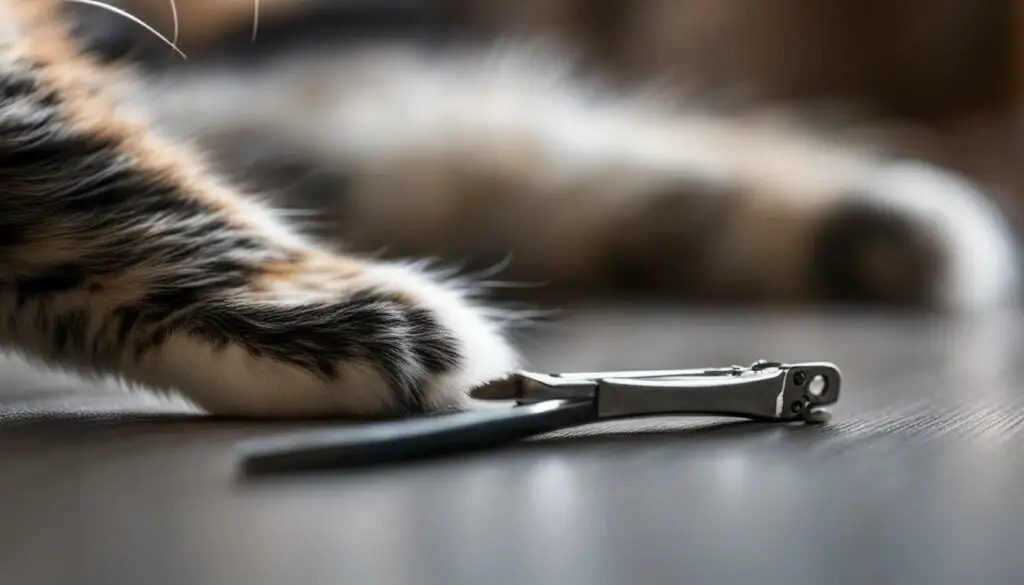
Caring for Your Cat’s Nails
As responsible pet owners, it is important to take care of our furry friends‘ basic needs, including their nail maintenance. Regularly checking and trimming your cat’s nails is essential for their health and overall well-being. In this section, I will provide you with some tips on how to properly care for your cat’s nails, ensuring their claws stay in optimal condition.
Why Nail Care is Important
Keeping your cat’s nails trimmed is not just about preventing damage to your furniture and surfaces. Overgrown nails can cause discomfort and even lead to injuries. Long nails can curl into the paw pads, making it painful for your cat to walk and jump. Additionally, neglected nails can snag on fabrics and carpets, causing them to tear. Regular nail care is essential for preventing these issues and ensuring your cat’s comfort.
To maintain your cat’s nails, you’ll need to check them regularly for any signs of overgrowth. If the nails appear excessively long or curling inward, it’s time for a trim. It’s best to start getting your cat accustomed to nail care from a young age, as older cats may be more resistant to having their nails handled.
How to Trim Your Cat’s Nails
Trimming your cat’s nails can be done at home with some patience and the right tools. You’ll need a pair of cat nail clippers or human nail clippers with a straight edge. Make sure to have a styptic pencil or cornstarch on hand to stop any bleeding in case you accidentally cut the quick.
It’s important to approach the process calmly and gently. Find a quiet, comfortable space where you and your cat can relax. If your cat is particularly anxious or resistant, you may need to enlist the help of another person to hold them while you trim their nails.
| Steps for Trimming Your Cat’s Nails |
|---|
| 1. Hold your cat’s paw and gently press on the pad to extend the claws. |
| 2. Identify the translucent area of the nail, known as the quick. Avoid cutting into the quick, as it can cause pain and bleeding. |
| 3. Position the clippers perpendicular to the nail and make a swift, clean cut, removing the pointed tip. |
| 4. Repeat the process for each nail, taking breaks if needed to keep your cat calm and comfortable. |
Remember to reward your cat with praise and treats after the nail-trimming session to create a positive association with the experience. If you’re unsure about trimming your cat’s nails or your cat becomes too stressed, consult with a professional groomer or your veterinarian for assistance.
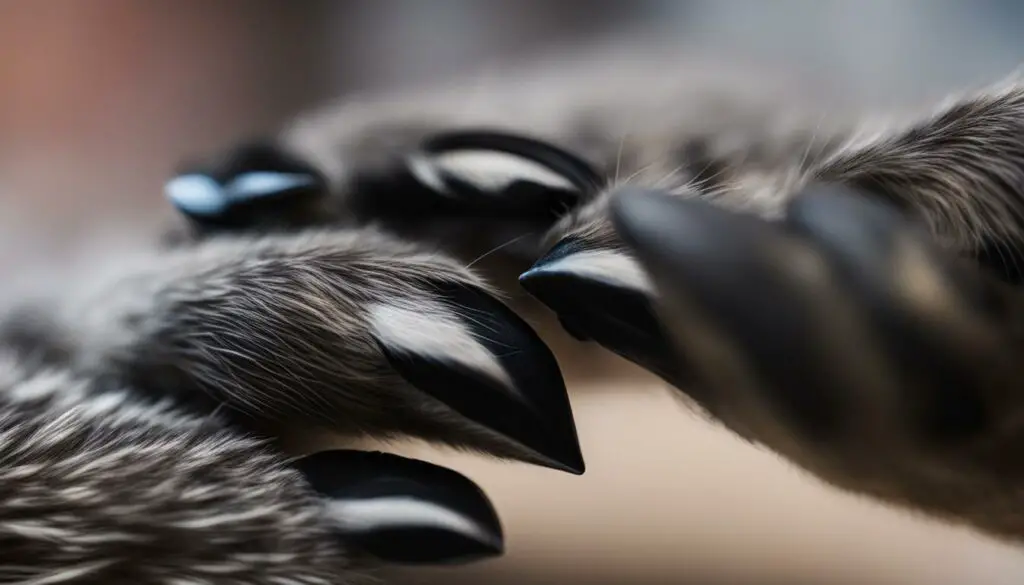
Conclusion
Taking care of your cat’s nails is an important part of being a responsible pet owner. Regular nail maintenance not only prevents damage to your home but also ensures your cat’s comfort and well-being. By following the proper techniques and approaching the process with patience and care, you can keep your cat’s nails in great shape and maintain a happy and healthy feline friend.
Different Methods for Clipping Cats Claws
When it comes to clipping a cat’s claws, there are several methods that can be used to ensure a safe and comfortable experience for both the cat and the person performing the task. Different cats may respond differently to each method, so it’s important to find the one that works best for your cat’s personality and comfort level.
The Lap Method:
The lap method involves holding the cat on your lap and gently extending the claws to clip them. This method is suitable for cats who are comfortable being handled and may be more relaxed in a familiar setting. It allows for better control over the clipping process and provides a sense of security for the cat.
The Burrito Method:
The burrito method is another popular technique for clipping a cat’s claws. It involves securely wrapping the cat in a blanket or towel, leaving only the paw you are working on exposed. This method can help calm down more anxious or active cats, as it restricts their movement and provides a sense of containment.
Assisted Clipping:
In some cases, having an extra person assist with the claw clipping process can make it easier. One person can hold the cat securely while the other person trims the claws. This method is useful for cats who are particularly difficult or resistant to having their claws clipped.
| Methods | Suitability | Advantages |
|---|---|---|
| Lap Method | Suitable for cats who are comfortable being handled and relaxed in familiar settings. | Better control over the clipping process, sense of security for the cat. |
| Burrito Method | Suitable for anxious or active cats who require containment. | Calms down the cat, restricts movement for easier handling. |
| Assisted Clipping | Suitable for cats who are difficult or resistant to having their claws clipped. | Extra person provides support, reduces stress for both the cat and the person performing the task. |
Whichever method you choose, it’s important to remember to approach the task with patience, gentleness, and a calm demeanor. This will help create a positive experience and build trust between you and your cat. Additionally, using proper cat nail clippers and following the correct technique will ensure that the claws are trimmed safely and efficiently.
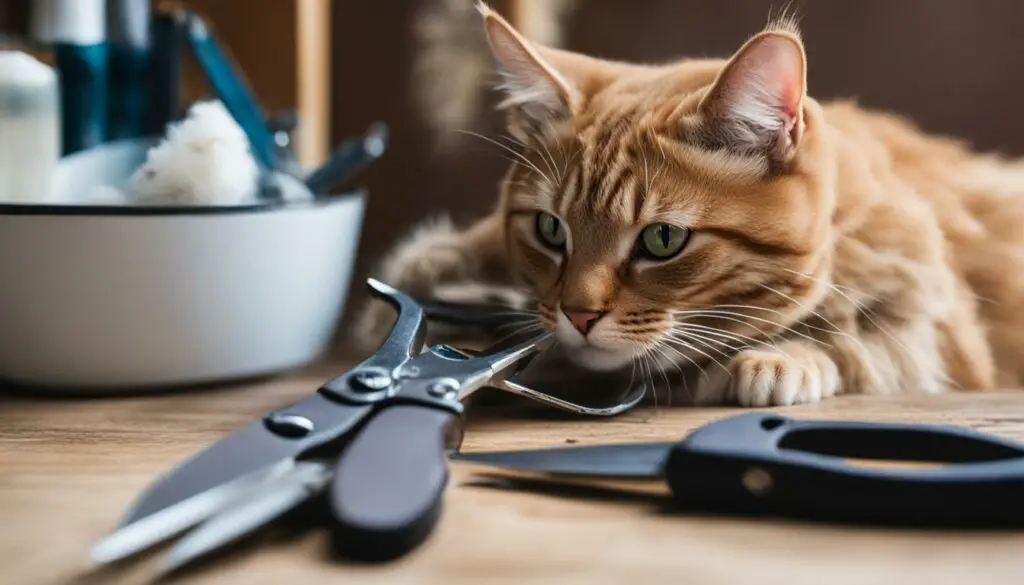
By finding the method that works best for your cat and taking the necessary precautions, you can make the process of clipping your cat’s claws a stress-free and beneficial one. Regular nail maintenance is an essential part of cat care, and when done properly, it can contribute to your cat’s overall health and well-being.
Choosing the Right Tools for Claw Clipping
When it comes to clipping a cat’s claws, using the right tools is essential for a safe and effective experience. Let’s explore the different options available:
Scissor Clippers
Scissor clippers are a popular choice for many cat owners. They work similar to regular scissors, with two blades that meet when closed, trimming the nail in between. Scissor clippers provide good control and are suitable for cats of all sizes.
Guillotine Clippers
Guillotine clippers have a unique design featuring a hole where you insert the cat’s nail. When you squeeze the handles, a blade slides forward, quickly trimming the nail. Guillotine clippers are suitable for cats with thinner nails and can be an excellent option for those who have difficulty with scissor clippers.
Styptic Pencil
Accidents can happen during nail clipping, and sometimes the quick, which is the vein inside the nail, may accidentally be cut, resulting in bleeding. Having a styptic pencil on hand is crucial as it helps stop bleeding by promoting blood clotting. Simply apply the styptic pencil to the affected area to stop the bleeding quickly.
| Tool | Pros | Cons |
|---|---|---|
| Scissor Clippers | Provides control, suitable for cats of all sizes | May require more effort for thicker nails |
| Guillotine Clippers | Quick and easy to use, ideal for thinner nails | Requires careful positioning, may not be suitable for larger cats |
Remember, before using any clippers, it’s important to familiarize yourself with their proper usage to ensure a safe and comfortable experience for your cat. If you’re unsure about using clippers, consult with a professional groomer or your veterinarian for guidance.
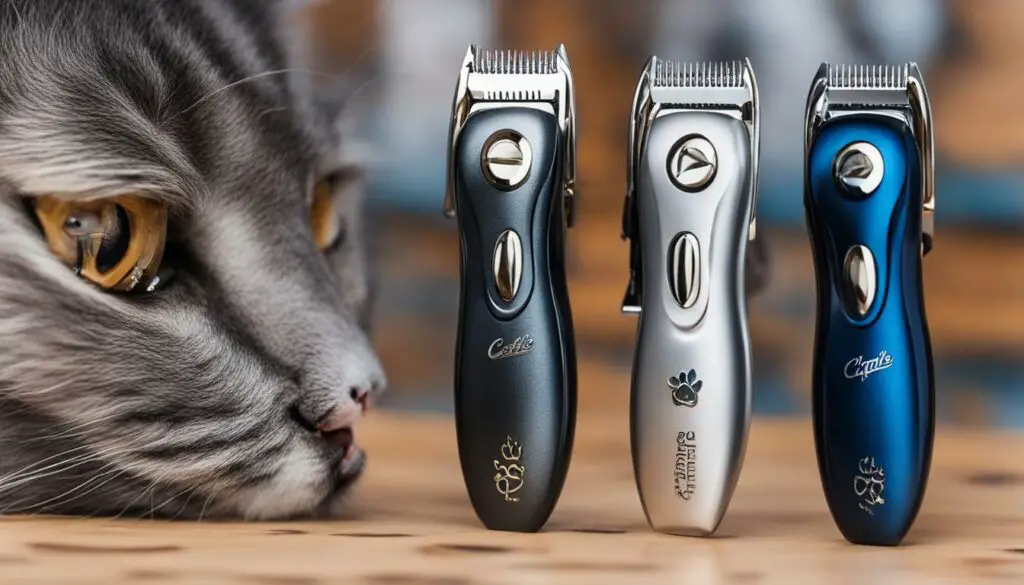
Creating a Positive Association with Claw Clipping
Creating a positive association with claw clipping is essential for both the cat’s comfort and the owner’s ease of handling. By incorporating treats, rewards, and a calm environment, the experience can become much more enjoyable for both parties involved. Here are some tips to help create a positive association with claw clipping:
- Start with desensitization: Before introducing the clippers, it’s important to get the cat accustomed to having their paws touched. Start by gently massaging and touching their paws during playtime or while they are relaxed. This will help them associate paw handling with positive experiences.
- Introduce the clippers gradually: Begin by simply showing the cat the clippers without actually using them. Reward their calm behavior with treats and praise. Gradually progress to touching the clippers to their paws without clipping. This gradual introduction will help them feel more comfortable with the clippers.
- Use positive reinforcement: During the actual clipping process, offer treats and rewards after each successful trim. This positive reinforcement will help the cat associate the experience with something enjoyable. Remember to use treats that your cat finds particularly enticing to ensure maximum motivation.
- Keep the environment calm and quiet: Find a quiet space where you and your cat can focus without distractions. Turn off loud noises and keep other pets and children away during the clipping session. A calm environment will help reduce stress and anxiety for both you and your cat.
With patience and consistency, you can create a positive association with claw clipping that will make the process more comfortable and stress-free for your cat. Remember to always prioritize your cat’s well-being and comfort throughout the entire process.
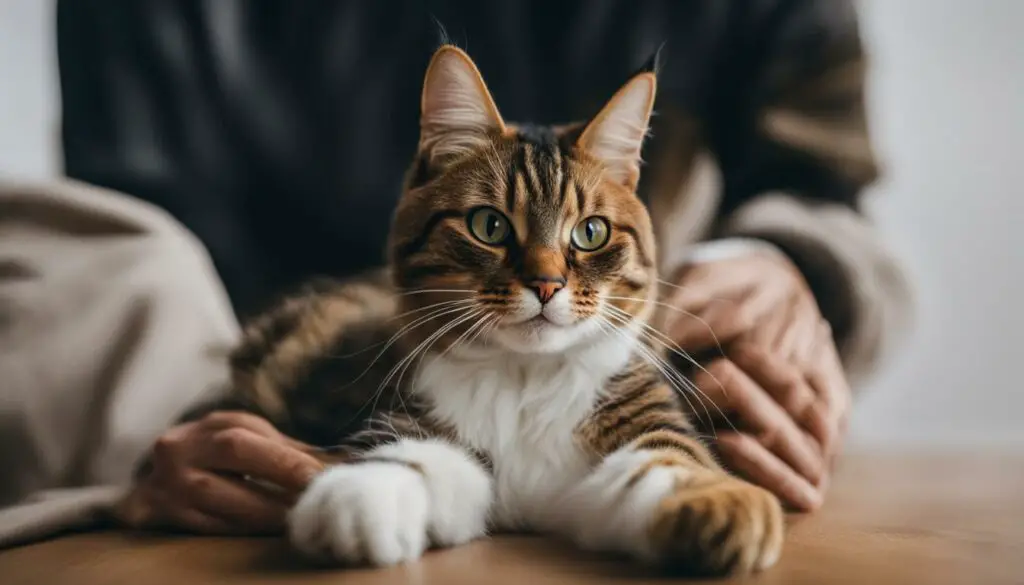
The Importance of Regular Nail Checks
Checking a cat’s nails regularly is crucial for maintaining its overall health and well-being. By regularly examining and monitoring the length of your cat’s nails, you can prevent potential health issues and discomfort that may arise from overgrown or damaged nails.
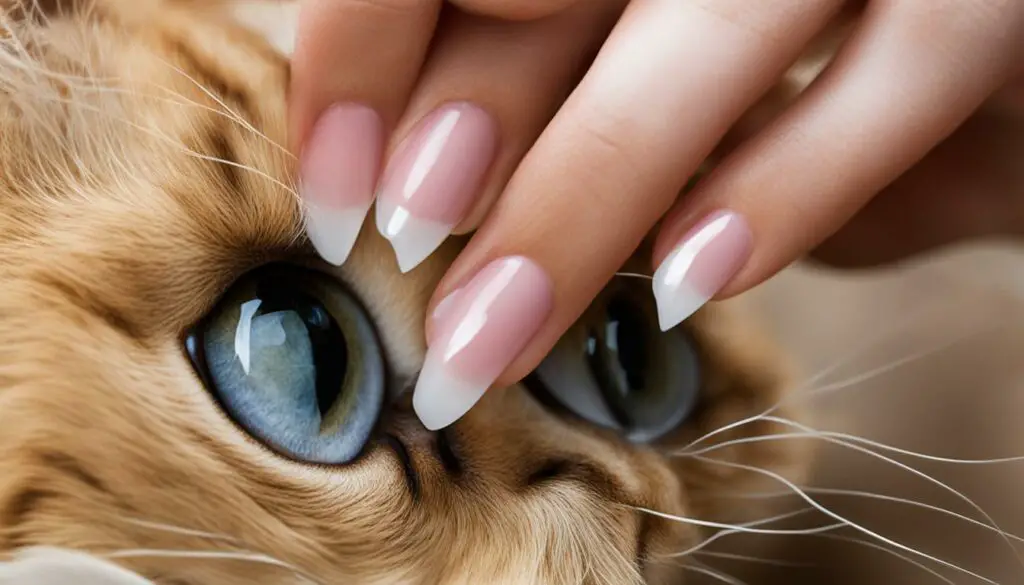
Regular nail checks provide an opportunity to identify any abnormal growth, infections, or ingrown nails that may require medical attention. Additionally, keeping your cat’s nails at an appropriate length can help prevent them from causing accidental scratches or injuries to themselves, other pets, or family members.
To perform a thorough nail check, gently hold your cat’s paw and examine each nail. Look for signs of excessive length, cracking or splitting, redness, or swelling. If you notice any of these issues or if your cat shows signs of discomfort, such as limping or avoiding using their paws, it is recommended to consult a veterinarian for further evaluation and guidance.
Regular nail checks, along with proper nail care and maintenance, are essential aspects of responsible pet ownership. By keeping your cat’s nails in good condition, you can help ensure their comfort and prevent any potential health issues from arising.
Alternatives to Clipping Cats Claws
While clipping a cat’s claws is an effective method for preventing damage, there are alternative options to consider. Providing a variety of scratching posts and surfaces can divert a cat’s attention from furniture and encourage them to scratch in appropriate areas. Scratching posts are available in different materials such as sisal, carpet, or cardboard, allowing you to find the one that best suits your cat’s preferences.
In addition to scratching posts, there are other scratching surfaces you can introduce to your cat. Some cats enjoy horizontal scratching pads, while others prefer vertical surfaces like tree trunks or logs. Experimenting with different options can help you find what works best for your feline friend.
“By providing alternative scratching options, you can redirect your cat’s natural behavior and protect your furniture at the same time,” explains Dr. Jane Smith, a veterinarian specializing in feline behavior.
If your cat has a particular affinity for certain furniture pieces or surfaces, you can also use products like Sticky Paws. These adhesive strips can be applied to furniture or other areas you want to protect from scratching. The strips have a sticky texture that cats find unpleasant, discouraging them from scratching in those areas.
| Alternative | Description |
|---|---|
| Scratching Posts | Vertical or horizontal surfaces covered in materials like sisal or carpet that provide a dedicated area for scratching. |
| Scratching Pads | Flat surfaces covered in materials like cardboard that cats can scratch horizontally. |
| Tree Trunks or Logs | Natural surfaces that provide a vertical scratching option for cats. |
| Sticky Paws | Adhesive strips that can be applied to furniture to deter cats from scratching. |
Remember, it’s important to introduce these alternatives gradually and make them appealing to your cat. Placing treats or toys near the scratching post or surface can help encourage their interest. With patience and persistence, you can successfully redirect your cat’s scratching behavior and preserve your furniture.
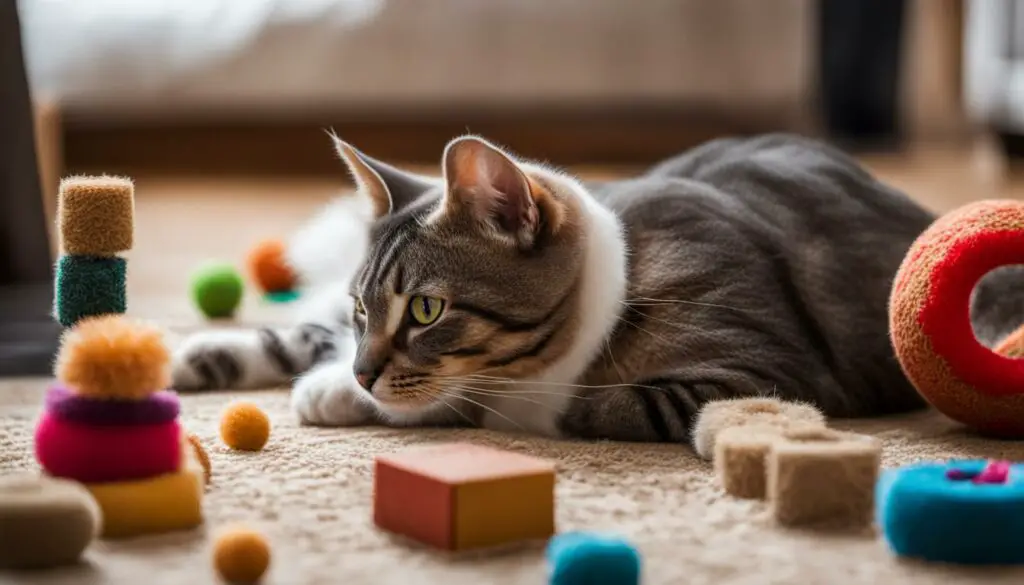
Understanding Scratching Behavior in Cats
Scratching is a natural behavior in cats that serves multiple purposes. It allows cats to mark their territory, stretch their muscles, and exercise their bodies. By understanding the reasons behind scratching behavior, cat owners can better manage and redirect this instinctual habit.
Cats have scent glands in their paws, and scratching helps them leave their mark and communicate their presence to other cats. It’s a way for them to establish and maintain their territory. This behavior is especially prevalent in outdoor cats, but even indoor cats exhibit territorial scratching.
In addition to marking territory, scratching also helps cats stretch their muscles. Cats have a natural instinct to stretch their bodies, and scratching provides an opportunity for them to do so. It helps keep their muscles supple and prevents them from becoming stiff or atrophied.
Exercise is another important aspect of scratching behavior. When cats scratch, they engage their muscles, burn energy, and maintain their overall physical health. Regular exercise through scratching can help prevent obesity and other health issues in cats.
“Understanding scratching behavior in cats is crucial for cat owners. By providing appropriate scratching posts and surfaces, as well as redirecting their behavior, we can ensure our cats are happy, healthy, and satisfied.”
By observing and understanding scratching behavior, cat owners can provide their pets with suitable alternatives to furniture and other inappropriate objects. Providing a variety of scratching posts and surfaces, such as sisal rope, cardboard, and carpet, can divert a cat’s attention from destructive scratching habits. It’s important to place these scratching options in areas where cats spend a lot of time, such as near their favorite resting spots.
| Benefits of Understanding Scratching Behavior | Effective Ways to Redirect Scratching Behavior |
|---|---|
| Prevents furniture damage | Provide appropriate scratching posts and surfaces |
| Allows cats to mark their territory | Place scratching options near favorite resting spots |
| Enables cats to stretch their muscles | Use positive reinforcement to encourage desired scratching behavior |
| Promotes exercise and physical health | Create a positive association by rewarding cats for using scratching posts |
Understanding scratching behavior in cats is crucial for cat owners. By providing appropriate scratching posts and surfaces, as well as redirecting their behavior, we can ensure our cats are happy, healthy, and satisfied. Remember to observe your cat’s preferences and adjust the scratching options accordingly, as each cat may have different preferences for scratching surfaces. With proper management and understanding, you can foster a harmonious environment where both you and your cat can coexist happily.
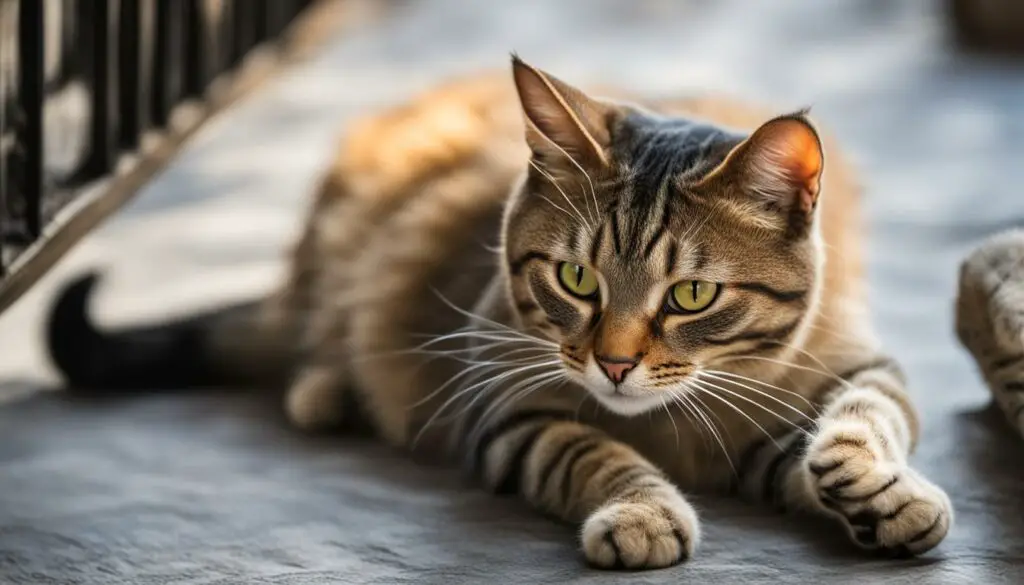
The Debate on Declawing
Declawing a cat is a controversial topic that raises questions about cruelty, defense, and disfigurement. While some argue that declawing is a necessary measure to prevent damage to furniture or injuries to humans, others believe it is an inhumane practice that goes against a cat’s natural behaviors. As a responsible pet owner, it is essential to explore alternatives to declawing that can preserve a cat’s well-being and ensure their ability to defend themselves.
One of the main concerns surrounding declawing is the pain and suffering it can cause to a cat. Declawing involves the amputation of the last bone of each toe, which is equivalent to cutting off a human’s fingertips at the last knuckle. This procedure can result in long-term physical and emotional consequences for the cat, including chronic pain, behavioral issues, and an increased likelihood of biting as their main form of defense.
Fortunately, there are alternative options to declawing that can address scratching behavior and protect furniture. Providing appropriate scratching surfaces, such as scratching posts or boards covered in sisal or cardboard, can redirect a cat’s natural scratching instincts. Regular nail trimming and clipping can also help keep a cat’s claws at a manageable length. Additionally, products like soft nail caps or nail covers can be applied to a cat’s claws to prevent damage to household items.
| Alternatives to Declawing | Benefits |
|---|---|
| Providing scratching posts and surfaces | Redirects scratching behavior |
| Regular nail trimming and clipping | Keeps claws at a manageable length |
| Soft nail caps or covers | Prevents damage to furniture |
By embracing these alternatives, cat owners can foster a safe and comfortable environment for both their feline companions and themselves. It is crucial to prioritize the cat’s natural behaviors and well-being over the convenience of declawing. Responsible pet ownership involves finding humane solutions that respect the cat’s nature and allow them to express their instincts without causing harm or discomfort.
Techniques for Difficult Cats
Clipping the claws of difficult cats can be a challenging task, but there are techniques that can help make the process easier and less stressful for both the cat and the owner. One effective method is scruffing, which involves gently holding the cat by the loose skin on the back of its neck, mimicking how a mother cat carries her kittens. This technique can help to calm the cat and keep it still during the claw clipping session.
Another technique that can be used is the “burrito method.” This involves wrapping the cat securely in a blanket or towel, leaving only the paw being worked on exposed. Wrapping the cat provides a sense of security and can prevent it from struggling or scratching during the claw clipping process. It is important to ensure that the cat’s head is not covered, allowing it to breathe freely.
In some cases, having an extra person to assist can be beneficial. This person can help to hold the cat securely while the claws are being clipped, making the process safer and more efficient. By working together, the cat can be kept calm and still, allowing for a successful claw clipping session.
| Technique | Description |
|---|---|
| Scruffing | Gently holding the cat’s loose skin on the back of its neck to keep it still during claw clipping. |
| Burrito Method | Wrapping the cat securely in a blanket or towel, leaving only the paw being worked on exposed. |
| Assistance | Having an extra person to help hold the cat securely while the claws are being clipped. |
It’s important to approach claw clipping with patience and a calm demeanor when dealing with difficult cats. Taking breaks if needed and rewarding the cat with treats or praise throughout the process can help create a positive association with claw clipping. Remember, the goal is to ensure the well-being of the cat and maintain their nail health, so finding the right technique that works for both the cat and the owner is crucial.
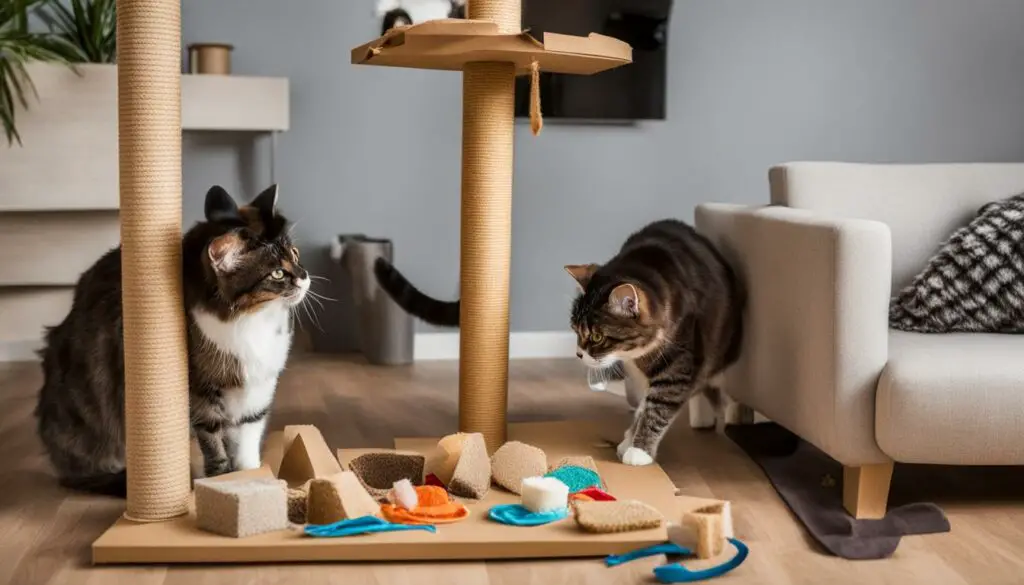
Conclusion
After breaking down the basics of cat claw clipping, it is clear that this practice can be a responsible part of pet ownership. As a cat owner, the decision to clip your cat’s claws should be made with their welfare in mind. By understanding the reasons behind claw clipping and using proper techniques, you can ensure your cat’s nails are well-maintained without causing unnecessary harm or discomfort.
Clipping cats’ claws is not cruel when done correctly. It helps prevent potential damage to your furniture and reduces the risk of injuries to both humans and other animals. By regularly trimming your cat’s nails, you are promoting their overall health and ensuring they can engage in their natural behaviors without any hindrance.
Responsible Pet Ownership
As responsible pet owners, it is our duty to provide the necessary care for our feline companions. This includes regular grooming, such as claw clipping, to maintain their well-being. While the decision to clip your cat’s claws ultimately lies with you, it is important to consider their individual needs and consult with a veterinarian if necessary.
Table: Pros and Cons of Cat Claw Clipping
| Pros | Cons |
|---|---|
| Prevents furniture damage | May cause temporary discomfort if done incorrectly |
| Reduces the risk of injuries to humans and other animals | Requires regular maintenance |
| Contributes to your cat’s overall health and well-being | May take time for some cats to adjust to the process |
Remember, responsible pet ownership means understanding and meeting your cat’s needs. While claw clipping is one aspect of cat care, it is important to provide a stimulating environment, appropriate scratching surfaces, and regular veterinary check-ups to ensure a happy and healthy life for your feline friend.
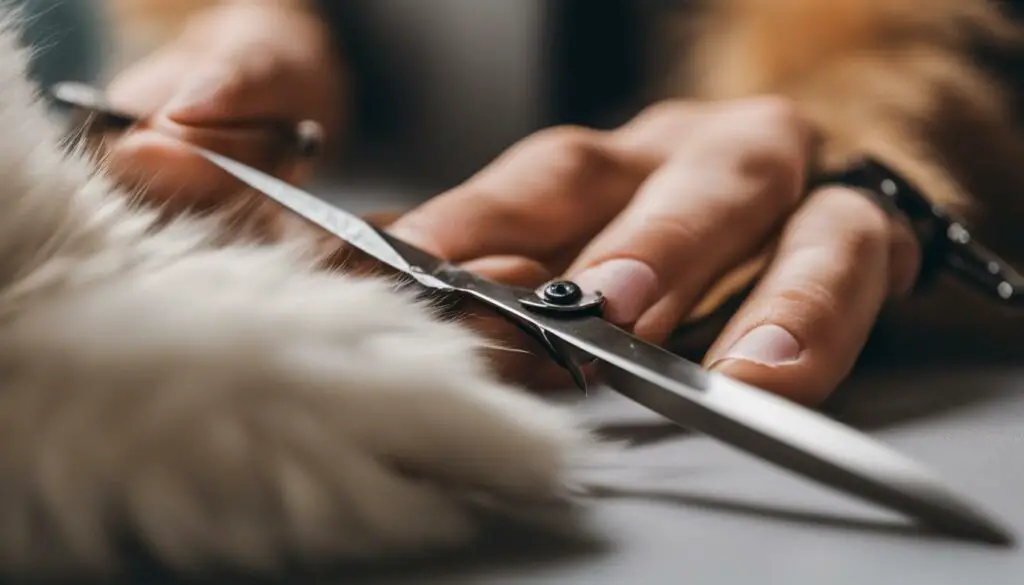
Conclusion
In conclusion, the debate on whether clipping cats’ claws is cruel or not can be broken down by understanding the basics of this procedure. While some argue that it is unnecessary and inhumane, responsible pet ownership requires us to consider the well-being of our feline companions.
Clipping cats’ claws has several benefits, including preventing damage to furniture and reducing the risk of injuries to humans or other animals. It is an essential aspect of maintaining their health and fulfilling their behavioral needs. However, it is crucial to approach this practice with care and empathy.
By using the correct techniques and tools, such as scissor or guillotine clippers, and creating a positive association with claw clipping, we can ensure a more comfortable experience for both cats and their owners. Handling a cat’s paws regularly and choosing a calm time for the clipping session can also contribute to a successful outcome.
Ultimately, the decision to clip a cat’s claws should be based on their individual needs and the owner’s ability to provide proper care. With responsible pet ownership and a compassionate approach, we can ensure the overall welfare of our feline friends. So, let’s make informed decisions and prioritize the happiness and health of our beloved cats.
FAQ
Is clipping a cat’s claws cruel?
Clipping a cat’s claws is not considered cruel when done properly and with care.
Why do cats need their claws clipped?
Clipping cats’ claws helps prevent damage to furniture, keeps nails at a comfortable length, and reduces the risk of injuries.
What are the benefits of clipping a cat’s claws?
Clipping a cat’s claws reduces the amount of damage they can do, prevents scratching behavior from damaging furniture, and reduces the risk of injuries to humans or other animals.
How can I clip a cat’s claws safely?
Hold the clippers perpendicular to the nail, cut about 1/8 inch before the quick (vein inside the nail), and be careful not to cut too close to avoid discomfort and bleeding.
Do you have any tips for successful claw clipping?
Handle your cat’s paws regularly, choose a calm time for clipping, and ask for assistance if needed. These steps can make the process easier and less stressful for both you and your cat.
How often should I check my cat’s nails?
It is recommended to check your cat’s nails every few weeks to ensure they are not growing too long or causing any discomfort. Older cats may require more frequent checks.
What are the different methods for clipping a cat’s claws?
There are various methods, such as holding the cat on your lap and gently extending their claws or using the “burrito method” to secure them while clipping. Choose the method that works best for your cat.
What tools should I use for claw clipping?
There are scissor clippers and guillotine clippers available. It’s important to have a styptic pencil on hand in case of accidental bleeding.
How can I create a positive association with claw clipping?
Reward your cat with treats or special food after each session, take it slow, and make sure your cat feels comfortable throughout the process for a positive experience.
Why is it important to regularly check a cat’s nails?
Regularly checking a cat’s nails ensures their overall health and well-being. Nails should be kept at a comfortable length and any issues or abnormalities should be addressed by a veterinarian.
Are there alternatives to clipping a cat’s claws?
Yes, providing a variety of scratching posts and surfaces, as well as using products like Sticky Paws, can help divert a cat’s attention from furniture and prevent damage.
Why do cats scratch and what purpose does it serve?
Cats scratch to mark territory, stretch, exercise, and remove dead claw sheaths. Understanding this behavior helps cat owners manage and redirect scratching habits.
What is the debate on declawing and are there alternatives?
Declawing is considered a cruel disfigurement and alternative options, such as clipping claws and providing appropriate scratching surfaces, should be considered to preserve a cat’s natural behaviors.
What techniques can I use for difficult cats?
Techniques like scruffing and the “burrito method” can help calm difficult cats during claw clipping sessions. Having an extra person assist with the process can also make it easier.

